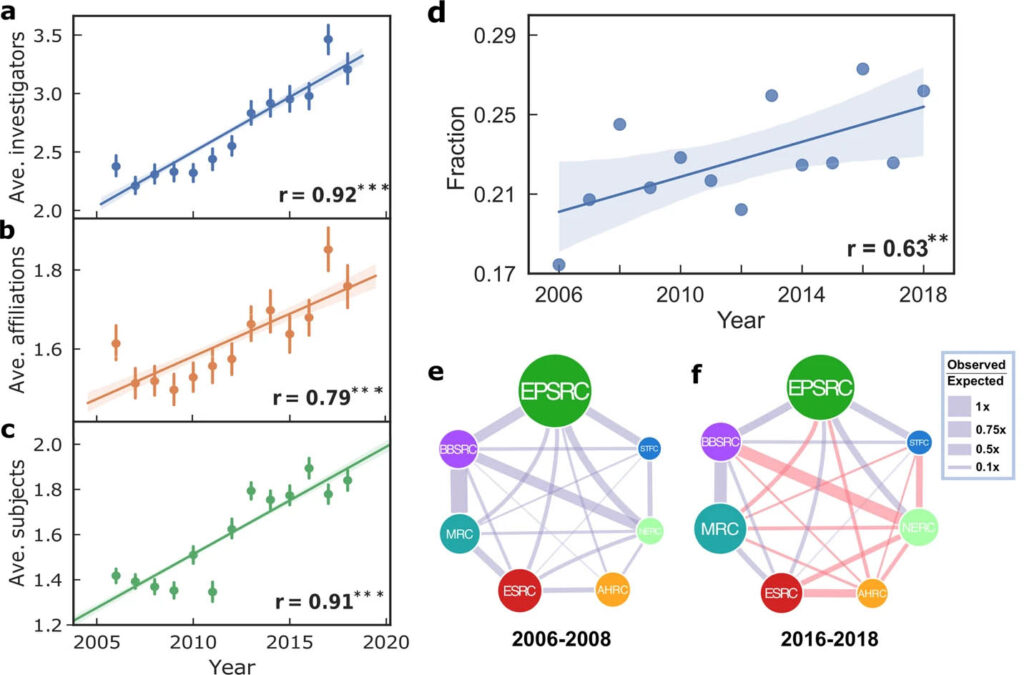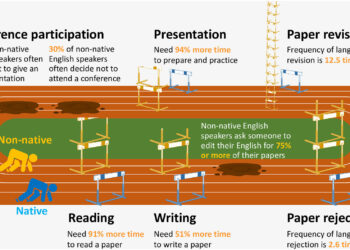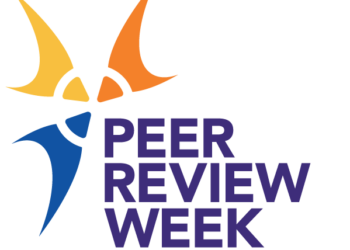Earlier this month I wrote about academia’s versatility demand and the pressure on researchers to master diverse skills. In that post, I examined the changes taking place and the need to adapt and put innovation before anything else. A pivotal aspect of these transformations that has emerged — the rise of interdisciplinary research, has created something of a paradox. We are now in an age where interdisciplinary research is key, but also an age of hyperspecialization. Tasks that were previously handled by one person are now broken down into more distinct specialized components done by several people. How does the shift to interdisciplinary research reshape the very foundation of how knowledge is generated and applied across various fields and what do the different stakeholders in academia need to do to balance the depth of specialized knowledge with the breadth of interdisciplinary understanding?

The age of hyperspecialization
The last few decades have witnessed an explosive growth in knowledge within individual academic disciplines. Advances in technology, research methods, and data collection have enabled researchers to explore their fields more deeply, leading to breakthroughs that were once out of reach. 2,700 years ago, the Greek poet Archilochus wrote: “the fox knows many things; the hedgehog one big thing.” By concentrating on a specific aspect of a broader problem, specialists can uncover nuances and details that might be overlooked in a more generalist approach.
Moreover, in a cyclical fashion, specialized expertise often fuels the development of cutting-edge technologies and methodologies. Researchers who are hyperspecialists are more likely to identify gaps and inefficiencies, driving innovation by creating novel tools and techniques. This, in turn, enables more accurate data collection, analysis, and interpretation, propelling the field forward.
While specialized skills offer significant research advantages, they also present challenges, especially when dealing with interdisciplinary issues. Specialized research can narrow solution possibilities, underscoring the need for bridging these gaps for innovative problem-solving.
How can researchers equipped with highly specialized skills effectively collaborate with experts from disparate fields to tackle problems that transcend traditional boundaries? I recently came across a very interesting thread on Twitter that builds a strong case for exploring the potential of interdisciplinary research.
Academia rewards hyper-specialization. Scholars narrow their interests until only a handful of people in the world can understand them.
That means you can make ground-breaking discoveries and contributions if you have even an undergrad-level fluency in two or more fields.
— Arvind Narayanan (@random_walker) August 1, 2019
Also: The age of interdisciplinary research
Creativity has long been associated with knowledge that spans various subject areas. According to Root-Bernstein (1995, 2001), many highly innovative scientists have pursued interests in the arts, and similarly, many innovative artists have shown interest in the sciences. This same paper reveals that specializing — independent of the area(s) or type of specialization — always decreases breadth.
Moreover, many of the pressing challenges facing our world today are intricately intertwined and defy simple categorization. Issues like climate change, global health crises, and technological advancements necessitate comprehensive solutions that draw from a multitude of disciplines. For example, in addressing the issue of climate change, interdisciplinary groups could consist of experts such as climatologists, marine biologists, urban planners, and economists. The combined knowledge of these individuals can yield comprehensive approaches, such as merging sustainable urban design with initiatives for ocean preservation, as well as formulating economic motivators to encourage environmentally friendly projects. Interdisciplinary research allows for a holistic understanding of these challenges, enabling the development of more effective strategies.
No wonder then that there has been a steady rise in interdisciplinary research. Scholarly Kitchen Chef David Crotty who had a sneak peek at this post before it was published said:
“I’m trying to think about how this reflects on the fields I’ve mostly been involved in. Biology has gone from a reductionist mindset to a systems level approach for most fields. We’re past the point of thinking about what one gene does, now we think about gene networks, for example; or the development of one tissue layer in an embryo is now examined in relation to its interactions with every other tissue layer in that embryo. Or in medicine, where treatment is increasingly across specialties and systems.”
Depth vs. Breadth: The Trade-off between Specialized Knowledge and Interdisciplinary Competence
The tension between specialized depth and interdisciplinary breadth is a central challenge researchers face today.
Funding Structures Favoring Traditional Disciplines
Funding mechanisms often align with traditional academic disciplines, making it challenging for interdisciplinary projects to secure the necessary resources. Grant agencies and institutions might prioritize well-defined projects within established fields, leaving collaborative and cross-disciplinary proposals at a disadvantage. This is slowly changing though as is evident below.

Tenure and Promotion Criteria Aligned with Specialization
The traditional academic promotion and tenure process tends to depend upon the significance and volume of publications and the proficiency in securing grants. Furthermore, these factors are influenced by internal departmental dynamics. Consequently, early-career researchers with broader interests that go beyond their field may face challenges with regard to recognition or career progression.
Differences in Terminology and Methodologies Across Disciplines
Each academic discipline has its own jargon, concepts, and research methodologies. When specialists from different fields come together, miscommunication can arise due to the use of unfamiliar terms or assumptions about common understanding. Bridging these gaps requires a concerted effort to find common ground and establish a shared language.
Addressing these challenges requires a collaborative effort from both researchers and institutions.
Strategies for Navigating the Interdisciplinary Landscape
What institutions can do
- Create interdisciplinary research hubs: Establishing dedicated physical spaces or virtual platforms for interdisciplinary collaboration fosters an environment where experts from various fields can convene, exchange ideas, and work together. These spaces become hubs of innovation, enabling the cross-pollination of ideas that can drive research projects beyond the boundaries of individual disciplines. The Media Lab at the Massachusetts Institute of Technology (MIT) is an example of this. By creating dedicated platforms for interdisciplinary collaboration, the Media Lab nurtures an environment where experts spanning diverse fields can assemble, engage in idea exchange, and collaboratively pursue their work.
- Re-organize departmental structures: The conventional departmental structures in universities, organized around specific disciplines, no longer adequately address the contemporary challenges. There is a requirement for these departments to adopt a more adaptable approach, enabling seamless interactions with other fields.
- Foster a culture of cross-disciplinary interaction: Institutions can nurture interdisciplinary collaboration by fostering a culture that values and rewards cross-disciplinary interactions. Workshops, seminars, and interdisciplinary conferences can facilitate knowledge sharing and encourage researchers to explore collaborations outside their comfort zones.
- Recognize interdisciplinary contributions in tenure and promotion criteria: Academic institutions can adjust their tenure and promotion criteria to acknowledge and reward interdisciplinary work. This might involve developing guidelines for evaluating the impact of interdisciplinary collaborations, including contributions to multiple disciplines, and recognizing efforts that lead to novel insights or solutions.
- Encourage funding models that support collaborative projects: Funding agencies and institutions play a crucial role in promoting interdisciplinary research by offering grants and resources specifically designed for collaborative projects. By encouraging researchers to work together across disciplines, these funding models can help bridge the gap between specialized research and interdisciplinary collaboration.
What researchers can do
Researchers, on the other hand, must actively invest in developing communication skills, seeking out interdisciplinary training, and embracing the benefits of diverse perspectives.
- Developing a T-Shaped Skillset: Today, initiatives to establish national standards in STEM education are increasingly shifting towards the adoption of an integrated curriculum, aiming to break down barriers between different disciplines. Researchers should aim to build a T-shaped skillset, where the vertical line in the letter T symbolizes the proficiency and specialized skills within a particular field, while the horizontal line represents the capacity to cooperate across diverse disciplines, engaging with specialists from different domains, and utilizing knowledge in areas beyond one’s primary expertise.
- Cultivating Adaptability and Curiosity: The interdisciplinary landscape demands adaptability and a curious mindset. Researchers should be open to exploring unfamiliar areas, embracing new concepts, and seeking connections between seemingly unrelated ideas. Embracing uncertainty and a willingness to step outside of one’s comfort zone can lead to breakthroughs that blend the best of specialized expertise with diverse knowledge.
As the interdisciplinary landscape continues to evolve, researchers and institutions must adapt and develop strategies that promote a harmonious balance between specialized expertise and collaborative innovation.
The research landscape today embodies a duality: the depth of specialized expertise and the potential of interdisciplinary collaboration. Both approaches have their merits, yet the synergy between them holds the promise of pushing the boundaries of knowledge and innovation. Amidst this clash of specialization and collaboration, the question echoes: Can we sculpt a future where the depth of specialized expertise resonates with the diversity of interdisciplinary thought, reshaping the academic landscape and driving research advancement?
Discussion
4 Thoughts on "Guest Post — The Paradox of Hyperspecialization and Interdisciplinary Research"
I often speak with authors whose research is rejected from journals because it is interdisciplinary and falls between the cracks (most likely because there are few if no reviewers who will take it on). I find myself at a loss between wanting to encourage them to continue with their novel approach and the pragmatics of trying to push their submission through to publication…
It’s indeed disheartening to witness the struggles these researchers face, isn’t it? 🙁 I’m eager to explore ways we can provide encouragement. Here are some initial thoughts, and I’d love to hear more from you:
– Consider proposing the use of preprint servers and open-access platforms as avenues to share and gather feedback on interdisciplinary research.
– Encourage authors to collaborate with colleagues from diverse disciplines, as they could potentially offer recommendations for suitable journals and even suggest potential reviewers.
– Recommend that researchers seek out related work within their field and identify journals that have shown willingness to publish research in those areas.
– Motivate researchers to engage with interdisciplinary conferences and connect with fellow participants who appreciate the value of crossing disciplinary boundaries.
I believe that initiating discussions and fostering collaboration is crucial. By coming together, we can begin to develop sustainable solutions. Additionally, advocating for reviewer training that encompasses guidelines for evaluating interdisciplinary research could be an essential step toward resolving this issue.
If you have further insights or alternative suggestions, please feel free to share! 🙂
Thank you, Roohi. A splendid piece! Yes, “Funding mechanisms often align with traditional academic disciplines, making it challenging for interdisciplinary projects to secure the necessary resources.” And “The traditional academic promotion and tenure process tends to depend upon the significance and volume of publications and the proficiency in securing grants.” The “significance and volume of publications” so much depends on prior “proficiency in securing grants” that many of today’s funding gatekeepers have had to have higher expertise at gaining grants than in their disciplines. There is a vicious circle that penalizes the generalists whom we so much need for fundamental advances.
Thank you Donald! : ) I agree. It’s evident that systemic changes are necessary to truly encourage researchers to transcend the boundaries of their respective fields. However, the growing prevalence of collaborative research is a promising sign, and I hope that this trend will lead us toward a more diverse, collaborative, and inclusive academic landscape. The collective goal should be fostering an environment that not only accepts but also actively promotes groundbreaking interdisciplinary work. It’s unfortunate that the existing structures sometimes restrain this potential. Greater flexibility and freedom within academia would undeniably propel science forward in remarkable ways.



